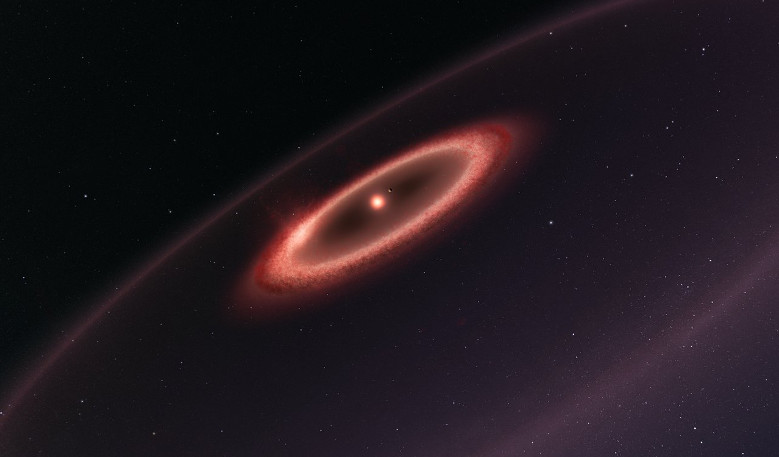A ring of dust that stretches a few hundred million kilometres has been found around our nearest star Proxima Centauri, hinting that an elaborate planetary system might be present.
The number of exoplanet detections has been steadily rising since their first discovery in 1992 and despite the multitude of far-off worlds found so far, it was only last year that astronomers spotted the closest exoplanet to us; Proxima b. Proxima b is an Earth-sized temperate exoworld orbiting at just four million kilometres from its parent star – Proxima Centauri – the faint red dwarf that lies just four light-years away from us.
Although much has been speculated about Proxima b, nothing further about the system has been discovered, until now and the observation of a large band of dust between one to four times as far from Proxima Centauri as the Earth is from the Sun, has tantalising prospects.
“The dust around Proxima is important because, following the discovery of the terrestrial planet Proxima b, it’s the first indication of the presence of an elaborate planetary system, and not just a single planet, around the star closest to our Sun,” said the lead author of the new study, Guillem Anglada, from the Instituto de Astrofísica de Andalucía (CSIC), Granada, Spain.
“This result suggests that Proxima Centauri may have a multiple planet system with a rich history of interactions that resulted in the formation of a dust belt. Further study may also provide information that might point to the locations of as yet unidentified additional planets,” added Anglada.
The belt, which was spotted by the team using the Atacama Large Millimetre/Submillimetre Array (ALMA) in Chile, is thought to have a total mass of about one hundredth of the Earth’s mass and is as cold as that of the Kuiper Belt in the outer Solar System; so around –230 degrees Celsius.
The team also hint that a second belt of even colder dust could be lurking about ten times further out. If confirmed, the apparent shape of the very faint outer belt, could help astronomers estimate the inclination of the Proxima Centauri planetary system, which in turn would allow a better determination of the mass of the Proxima b planet. This at present, is currently known only as a lower limit. However the nature of the secondary outer belt is also intriguing, given its frigid environment far from a star that is fainter and cooler than the Sun.
“These first results show that ALMA can detect dust structures orbiting around Proxima. Further observations will give us a more detailed picture of Proxima's planetary system. In combination with the study of protoplanetary discs around young stars, many of the details of the processes that led to the formation of the Earth and the Solar System about 4600 million years ago will be unveiled. What we are seeing now is just the appetiser compared to what is coming!” explains co-author Pedro Amado, also from the Instituto de Astrofísica de Andalucía.
A knowledge of the dust environment around Proxima Centauri is essential for another reason too. Hoping to launch in the next couple of decades is Starshot - a project which will use miniature space probes attached to laser-driven sails, that will race to our nearest stellar neighbour at speeds of up to 100 million miles an hour. An understanding of what lies in wait for the probes, is therefore crucial for planning such a mission.











